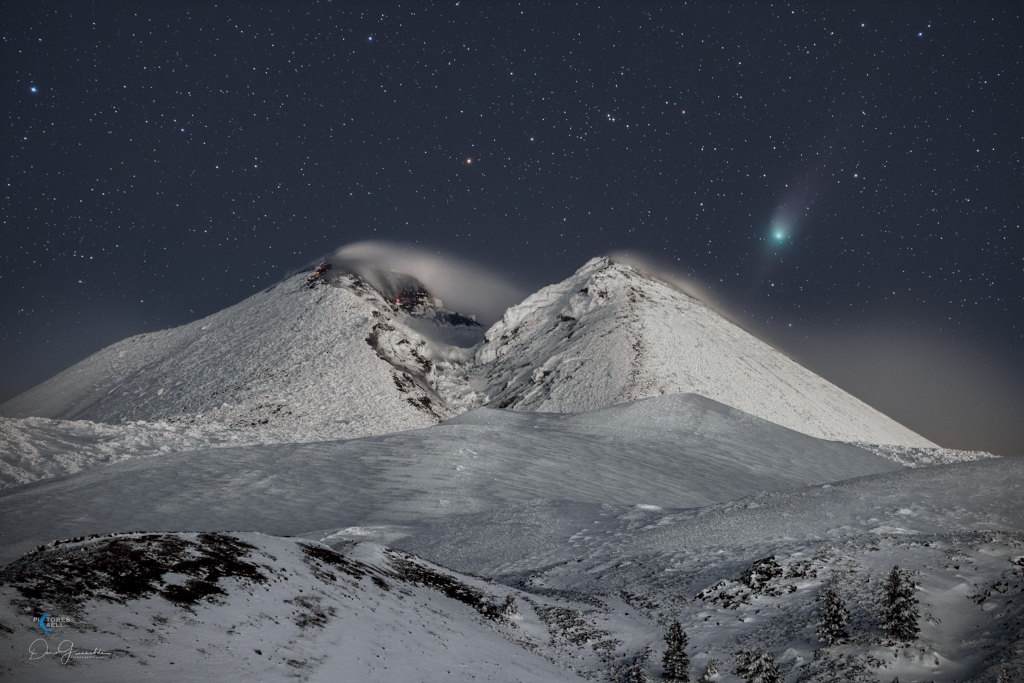
Comets: Celestial Wanderers, Cosmic Time Capsules
For millennia, the appearance of a comet in the night sky was an event fraught with both terror and wonder. Trailing luminous tails across the inky blackness, these celestial apparitions were interpreted as harbingers of doom, divine omens, or symbols of profound change. Today, however, our understanding has shifted dramatically. While still inspiring awe, comets are no longer feared but revered as cosmic time capsules – icy, dusty relics from the solar system’s birth, holding clues to our very origins.
These spectacular visitors, often dubbed "dirty snowballs," are far more than just pretty lights. They are primordial remnants, frozen aggregations of gas, dust, and rock that have largely remained unchanged since the formation of our sun and planets some 4.6 billion years ago. Their study offers an unparalleled glimpse into the conditions of the early solar nebula, the raw materials from which Earth and life itself emerged.
The Anatomy of a Cosmic Ghost

To truly appreciate a comet, one must understand its fundamental components. At its heart lies the nucleus, a relatively small, solid body typically a few kilometers to tens of kilometers across. This is the "dirty snowball" – a mix of frozen water, carbon dioxide, methane, ammonia, and various dust particles. It’s the most pristine part of the comet, having spent most of its existence in the deep freeze of the outer solar system, far from the Sun’s warming influence.
As a comet approaches the Sun, the increasing solar radiation causes these volatile ices to sublimate – turning directly from solid to gas, bypassing the liquid state. This process releases vast amounts of gas and dust, forming a hazy, luminous envelope around the nucleus called the coma. The coma can expand to hundreds of thousands of kilometers in diameter, sometimes even larger than Jupiter.
From the coma, two distinct tails typically emerge, pushed away from the Sun by solar wind and radiation pressure. The most visually striking is the dust tail, composed of microscopic dust particles that reflect sunlight. This tail is broad, curved, and often yellowish-white, tracing the comet’s orbital path. The second is the ion tail (or gas tail), formed by ionized gases pushed directly away from the Sun by the solar wind. This tail is usually straight, narrower, and often glows with a blue or greenish hue due to the emission of light by energized gas molecules. The dynamic interplay between the nucleus, coma, and tails creates the ephemeral beauty that has captivated humanity for ages.
From the Cosmic Deep: Origins
Where do these magnificent wanderers come from? Scientists have identified two primary reservoirs in the outer reaches of our solar system:
-
The Kuiper Belt: Located beyond the orbit of Neptune, this vast donut-shaped region is home to countless icy bodies, including dwarf planets like Pluto. Comets originating here are typically short-period comets, completing an orbit around the Sun in less than 200 years. Their orbits are often relatively flat, lying close to the plane of the planets. Halley’s Comet, with its famous 76-year orbital period, is a prime example of a Kuiper Belt comet.

-
The Oort Cloud: This spherical shell of icy objects is believed to encompass our entire solar system, extending perhaps a third of the way to the nearest star. It’s thought to contain trillions of cometary nuclei. Comets from the Oort Cloud are typically long-period comets, taking thousands or even millions of years to complete a single orbit. Their orbits are often highly eccentric and can come from any direction, explaining their seemingly random appearances. Comets like Hale-Bopp, visible for months in the late 1990s, are classic Oort Cloud visitors.
Gravitational perturbations from giant planets or passing stars can nudge these icy bodies out of their quiescent orbits and send them hurtling inwards towards the Sun, beginning their spectacular, albeit often fleeting, journey into the inner solar system.
Harbingers of Fate: Comets Through History
Before the advent of scientific understanding, comets were powerful symbols embedded in human culture. Their sudden, unpredictable appearance and dramatic visual impact made them easy targets for superstitious interpretation. They were seen as omens of war, famine, plague, or the death of kings.
The Bayeux Tapestry famously depicts Halley’s Comet in 1066, appearing as a fiery star over England, interpreted by the Anglo-Saxons as a portent of their defeat by William the Conqueror at the Battle of Hastings. Emperor Nero reportedly executed those who suggested a comet foretold his demise, only to later believe it might signify the fall of other rulers.
Yet, even in antiquity, some thinkers sought a rational explanation. The Roman philosopher Seneca, in the 1st century AD, famously wrote, "Someday there will be men who will demonstrate the orbits of these wanderers, their speed and their reasons for being." His prescient words would eventually be vindicated by astronomers like Edmond Halley, who in 1705, using Isaac Newton’s laws of motion, correctly predicted the return of the comet now bearing his name, marking a pivotal shift from superstition to scientific inquiry.
Cosmic Time Capsules: Scientific Significance
Beyond their historical and cultural impact, comets hold immense scientific value. They are, in essence, pristine samples of the raw material from which our solar system was formed. Because they spend most of their lives in the frigid outer reaches, they haven’t been subjected to the intense heat and pressure that transformed the inner planets.
Scientists study comets to understand:
- Early Solar System Chemistry: The composition of comets reflects the chemical makeup of the primordial solar nebula. By analyzing the gases and dust released, researchers can reconstruct the conditions that prevailed when the Sun and planets were first coalescing.
- The Origin of Water on Earth: One of the most compelling questions in planetary science is how Earth acquired its abundant water. While asteroids are also candidates, comets are rich in ice. Studies of their deuterium-to-hydrogen ratio (a "fingerprint" of water’s origin) are crucial. Missions like Rosetta, which studied Comet 67P/Churyumov-Gerasimenko, have shown that while some comets’ water doesn’t match Earth’s, others might. The story is complex and ongoing.
- The Delivery of Organic Molecules: Comets are known to contain complex organic molecules – the building blocks of life. It’s plausible that cometary impacts on early Earth delivered some of these essential ingredients, kickstarting the chemical evolution that led to the first living organisms.
Close Encounters: Missions and Discoveries
Our understanding of comets has exploded thanks to dedicated space missions.
-
Rosetta and Philae (ESA): This groundbreaking mission to Comet 67P/Churyumov-Gerasimenko provided unprecedented close-up views and data. Rosetta orbited the comet for over two years (2014-2016), while its lander, Philae, made the first-ever soft landing on a comet’s surface. The mission revealed a bizarre, duck-shaped nucleus, the presence of complex organic molecules, and provided invaluable insights into cometary outgassing and evolution. "Rosetta fundamentally changed our understanding of comets," noted Dr. Kathrin Altwegg, a lead scientist on the mission. "We saw an active, evolving body, not just a static dirty snowball."
-
Deep Impact (NASA): In 2005, NASA’s Deep Impact mission deliberately sent an impactor into Comet Tempel 1, creating a crater and allowing scientists to study the material ejected from beneath the surface, revealing its internal composition.
-
Stardust (NASA): This mission, launched in 1999, flew past Comet Wild 2 in 2004, collecting dust particles from its coma and returning them to Earth for laboratory analysis – the first time cometary material had been brought back for direct study.
Beyond these dedicated missions, observations of spectacular comets from Earth have also been vital. Comet Shoemaker-Levy 9 in 1994, whose fragments dramatically impacted Jupiter, provided a stark reminder of the potential for cosmic collisions. And Comet Hale-Bopp in 1997, one of the brightest and longest-observed comets in decades, captivated millions worldwide, rekindling public interest in these celestial marvels.
The Unseen Threat: Comets and Planetary Defense
While their scientific value is immense, comets also represent a potential threat. Large comets, traveling at immense speeds, could cause catastrophic impacts if they were to collide with Earth. The Tunguska event of 1908, a mysterious explosion over Siberia, is believed by many to have been caused by a cometary fragment or small asteroid.
The field of planetary defense actively monitors near-Earth objects, including comets, to identify potential impactors and develop strategies for mitigation. While the probability of a major cometary impact in the near future is low, the sheer destructive power of such an event underscores the importance of continued observation and research.
Gazing Forward: The Future of Comet Exploration
The allure of comets remains undiminished. Future missions are being planned to visit new comets, perhaps even returning more samples to Earth. Advances in telescope technology, both ground-based and space-based, continue to expand our census of these distant objects and allow for more detailed observations of their dynamic behavior.
Each new discovery about comets deepens our appreciation for their role in the cosmic narrative. From their ancient role as omens to their modern status as scientific treasures, comets continue to challenge our understanding and fuel our imagination. They are a poignant reminder that the universe is a vast, dynamic place, and that the secrets of our past, and perhaps our future, lie hidden in the icy hearts of these magnificent celestial wanderers.


